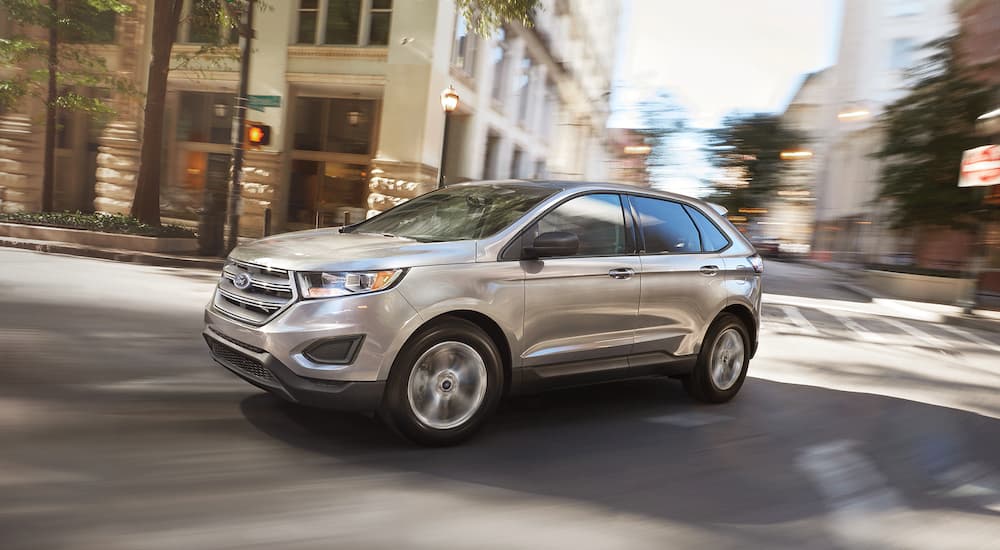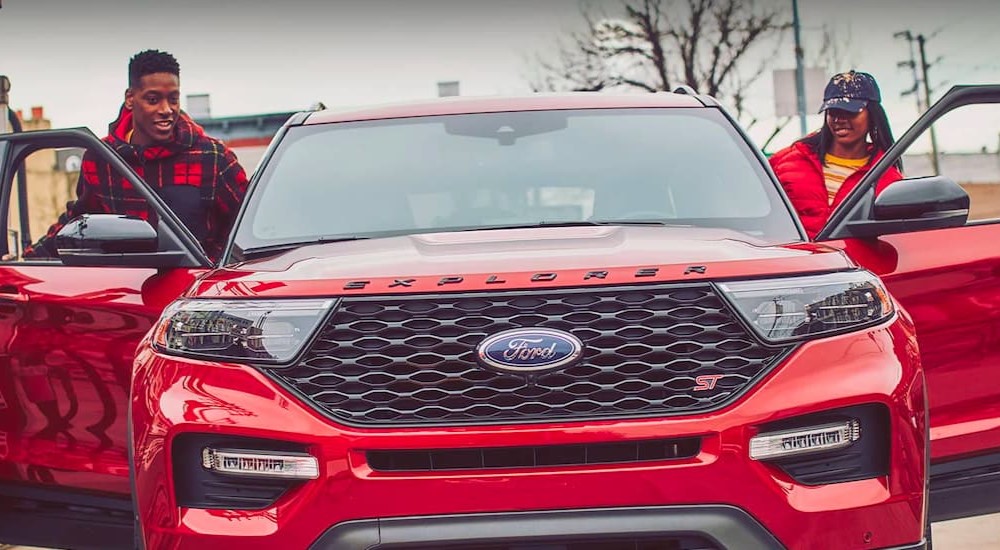“Good afternoon; I’d like to talk to you about your car’s extended warranty.” It’s the spam call of all spam calls, and one I don’t think twice about ending before the person on the other end of the line has a chance to launch into their sales pitch. That’s what makes it so ironic that I’m here to talk about extended warranty coverage. Don’t hang up.
I’m not here with a sales pitch. Instead, I’m here to share an experience after recently purchasing a new car. From one buyer to another, here’s why you can hang up on those extended warranty offers, but you might think twice about the extended coverage your dealership can provide as you finalize the sale on your next ride.

Warranty Coverage: Peace of Mind
Every automaker stands behind its models by offering comprehensive coverage that includes a powertrain and bumper-to-bumper warranty. This coverage does several things. First, it shows the manufacturer’s confidence in its product. It’s like saying, “We know we’ve built an incredible SUV and are proud to back our work.” Second, it entices you to invest in a new vehicle because the automaker is doing everything possible to minimize your repair expenses should your new car, truck, or SUV need repair. Used vehicles offer limited coverage or are sold as is.
I recently purchased a 2022 Ford Explorer, trading in my 2018 Edge to accommodate my family. Ford’s new vehicle warranty is comparable to other major automakers and includes bumper-to-bumper, powertrain, safety restraint, and corrosion coverage. Ford also includes specific coverage for hybrid, electric, and diesel-powered models. Ford’s bumper-to-bumper coverage is three years or 36,000 miles, and its powertrain and safety restraint system warranties are five years or 60,000 miles. Corrosion protection is good for five years and unlimited miles. Together, these warranties cover nearly every component of my Explorer, limiting my expenses when repairs are needed because of manufacturing defects in the materials or factory workmanship.
Doing the Math
For many drivers, a new vehicle warranty is enough to give them confidence in their purchase and peace of mind on the road. However, it’s critical to “do the math” and evaluate what this warranty offers and how it applies to you. What do I mean?
The average American drives around 13,500 miles yearly, meaning most of us log over 1,000 miles monthly. Now, consider where you fall relative to this average. As someone who falls within this range, I can expect my Explorer’s bumper-to-bumper coverage to expire at 36,000 miles since I’ll reach over 40,000 miles by the three-year mark. The same is true for the other warranties, including the powertrain coverage that expires after five years or 60,000 miles, whichever comes first.
Why does this matter? If you like to trade cars every few years, there’s little reason to worry about the warranty coverage on a new vehicle or any extended coverage. You’ll often trade your vehicle in before the warranty expires, allowing you to enjoy continual coverage with your next new vehicle purchase. However, if you’re like me and tend to keep your vehicles for a long time, it’s critical to consider what happens when your warranties expire.

Know Your Vehicle
My 2022 Explorer was a lucky find because the dealership briefly used it as a program car. So, with less than 5,000 miles on the odometer, I purchased it as a new vehicle and am covered by Ford’s standard new vehicle limited warranty. However, I also added Ford’s Extended Service Plan. So, why spend the extra?
Think about how far the automotive industry has evolved over the last decade. The Jeep Wrangler I drove years ago is prehistoric compared to the tech-savvy cars, trucks, and SUVs on the road today. I thought my Wrangler was fancy because it had a CD player, and it was at the time. Today, however, it’s a different story.
Vehicles like the 2022 Explorer rely heavily on technology to perform and keep drivers safe and connected. Center touchscreen displays boast infotainment systems like Ford’s SYNC; however, they do more than entertain. These displays are integral to how our vehicles operate, with the SYNC system delivering over-the-air updates that ensure every Ford model uses the latest software. At the same time, the systems are engineered to offer seamless connectivity via Apple CarPlay and Android Auto, respond to voice commands with Amazon Alexa, and navigate the fastest route with built-in navigational tools. But what happens when this technology fails?
I’m not arguing that these infotainment systems aren’t advanced or innovative, but, like anything, there’s a potential for failure. Even the most advanced technology has its glitches, and the automotive industry is no exception. When those glitches occur, I’d rather repair my vehicle without putting a gaping hole in my wallet, especially since most automotive repairs can cost anywhere from $500 to $6,000. For me, extended warranty coverage is the answer.
What’s the Big Deal?
Like most Americans, I put around 13,000 miles on my vehicle each year. My Explorer’s new vehicle warranty will likely expire because of mileage rather than time. However, by opting for Ford’s Extended Service Plan, I’m extending that timeframe and the number of protected components with options like PremiumCARE.
Every major automaker offers extended coverage, a far cry from those pesky phone calls that will live forever as memes and give extended warranty coverage a bad name. For example, Ford’s Extended Service Plan, or ESP, starts with PowertrainCARE and covers 29 engine, transmission, rear-wheel drive, and front-wheel drive components. BaseCARE covers 84 parts, adding coverage for the steering, brakes, front suspension, air conditioner, heater, and electrical system.
Ford’s ExtraCARE coverage builds on the first two tiers and protects 113 components. Most notably, the ExtraCARE tier is the first to cover high-tech features, including the instrument cluster, power seats, navigation system, rain-sensing wipers, reverse camera, SYNC, and more. The top-of-the-line PremiumCARE covers over 1,000 components for ten years and up to 175,000 miles. The difference is that the program offers extended protection over more parts, including the rear suspension, emissions-related components, the audio system, and all safety features.
When looking at these plans, I didn’t immediately jump to the top-tier PremiumCARE. Instead, I considered the average cost of repairs without coverage. For example, fixing the heater or air conditioner can cost up to $2,000, tech repairs anywhere from $500 to $1,000, and powertrain repair between $4,000 and $6,000. Knowing my plans to keep the Explorer for as long as possible, I estimated my potential repair costs down the road would easily supersede the cost of the PremiumCARE extended service plan. For me, the initial investment is beneficial because it genuinely gives me longer coverage and greater peace of mind knowing that my SUV’s vital components are backed by the manufacturer.
Do Your Homework, Weigh Your Options
I’ll never advise anyone to answer those pesky extended warranty calls, but I will encourage you to consider the benefits of a manufacturer-backed service plan. As the automotive industry progresses and evolves to meet driver demands, we’re inundated with innovative technologies that promise to streamline our connectivity, heighten our situational awareness, and enhance our safety anytime we’re behind the wheel. While this technology is impressive, it’s also incredibly expensive to repair or replace. Fortunately, it doesn’t have to be.
Extended service plans aren’t for everyone, but how will you know if you don’t ask? As you shop for your next vehicle, look at the manufacturer’s new vehicle warranty to better understand your initial coverage. Then, evaluate your needs, estimating how long that warranty will protect you and the potential repair costs once the warranty is expired. From there, you can determine if financing an extended warranty plan into your purchase is a worthwhile investment.



